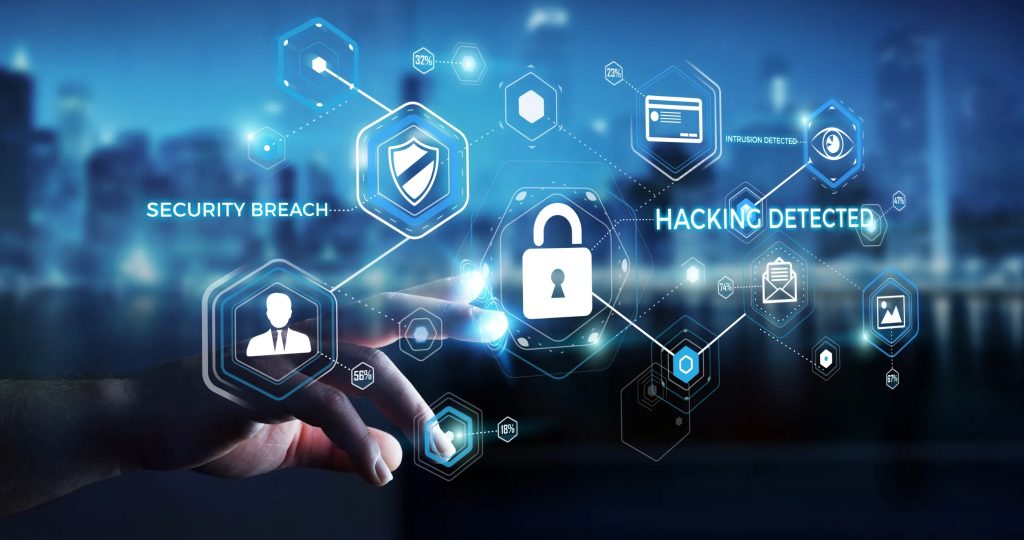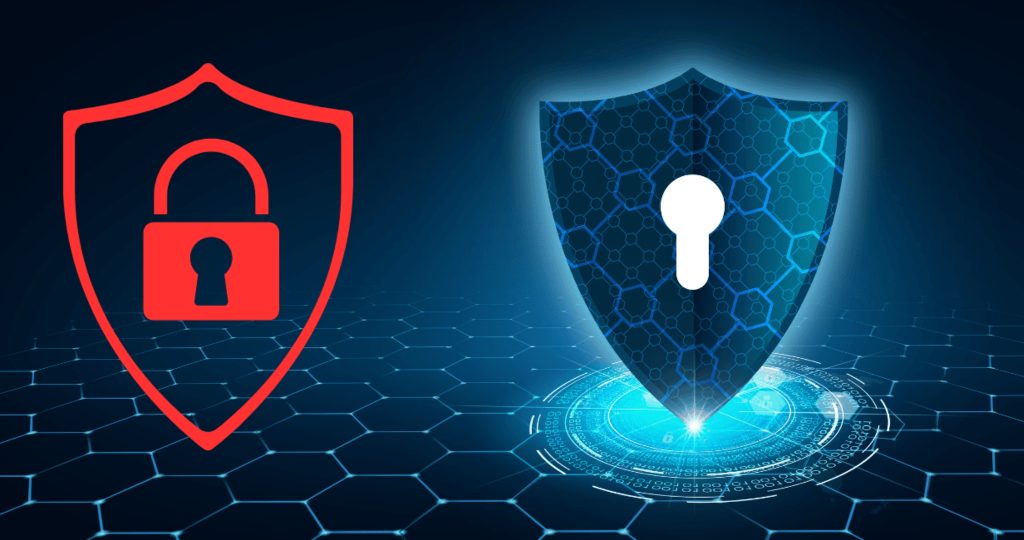Cybersecurity Evolution has become one of the most critical topics in today’s technology-driven world. As we continue to advance technologically, the need for robust security measures to protect digital assets has never been greater. Cyber threats are evolving rapidly, becoming more sophisticated and harder to combat, making cybersecurity an essential part of any organization’s infrastructure. In this article, we’ll explore the evolution of cybersecurity, the challenges it faces, and the future of securing digital environments.

1. The Early Days of Cybersecurity
- The history of cybersecurity evolution dates back to the 1970s when the first computer viruses were identified. At this stage, cyber threats were relatively simple and focused mainly on malware that would disrupt a computer system or steal small amounts of data. The introduction of the first computer worm, the Creeper virus, in 1971 marked the beginning of a more sophisticated approach to digital security threats.
- As the Internet began to grow in the 1990s, so did the need for more complex forms of security. Companies started developing antivirus software to protect against the increasing number of viruses that emerged with the rise of the internet. Firewalls were also introduced to protect networks from unauthorized access and attacks.
- However, the early days of cybersecurity were relatively simple compared to the complex threats organizations face today. Security measures were mostly reactive, and many businesses didn’t see the need for comprehensive protection until they were directly affected by a cyber attack.
2. The Rise of Cybersecurity and Hacktivism
- As technology advanced, so did the tactics of cybercriminals. By the early 2000s, cybercrime had evolved beyond simple malware to include phishing attacks, identity theft, and the rise of ransomware. The growth of the digital economy and the increasing reliance on the internet for business transactions made it a prime target for cybercriminals.
- During this time, hacktivism also emerged, where hackers would use their skills for political or social causes. High-profile attacks on government websites, corporate entities, and non-profit organizations became more common as activists targeted these organizations to promote their agendas.
- This period saw the introduction of more sophisticated defense mechanisms, such as intrusion detection systems (IDS), intrusion prevention systems (IPS), and enhanced encryption technologies. However, as digital attacks became more complex, organizations were forced to rethink their approach to cybersecurity.
3. The Need for Proactive Cybersecurity
- As cyber threats grew in sophistication, reactive measures such as antivirus programs and firewalls were no longer sufficient. This led to the evolution of cybersecurity toward a more proactive and strategic approach. By the mid-2010s, businesses and government agencies began investing heavily in proactive security measures, such as penetration testing, vulnerability assessments, and threat intelligence.
- A significant shift occurred when organizations realized that cybersecurity should be an integral part of their overall strategy rather than an afterthought. The increase in targeted attacks, particularly against critical infrastructure and financial institutions, meant that businesses had to think ahead to prevent breaches before they happened. This included implementing security operation centers (SOCs) to monitor for suspicious activity 24/7 and adopting the principle of least privilege to limit access to sensitive data.
- Simultaneously, regulatory frameworks such as GDPR (General Data Protection Regulation) and HIPAA (Health Insurance Portability and Accountability Act) emerged, forcing companies to comply with stricter data protection standards. These regulations pushed organizations to strengthen their cybersecurity frameworks to avoid significant fines and reputational damage.
4. The Role of Artificial Intelligence, Cybersecurity and Machine Learning
- As cyber threats have become more sophisticated, Artificial Intelligence (AI) and Machine Learning (ML) have played a significant role in the evolution of cybersecurity. AI systems can analyze vast amounts of data in real-time to detect unusual patterns and predict potential threats before they occur. These technologies enable cybersecurity experts to take action faster than ever before, preventing or mitigating attacks before they cause significant damage.
- Machine learning models are particularly useful in identifying zero-day vulnerabilities, or threats that have not yet been discovered. AI-driven endpoint security tools now help detect and block malware, phishing attempts, and ransomware, offering a more proactive approach than traditional signature-based antivirus solutions.
- The integration of AI and ML into cybersecurity systems is helping organizations keep pace with the growing number and complexity of cyber threats. These technologies are increasingly essential in the battle against ever-evolving cybercriminal tactics, allowing cybersecurity teams to focus on more strategic defense measures.
5. Cloud Cybersecurity and the Growing Importance of Data Protection
- As organizations moved to the cloud, the need for cloud security became one of the central pillars of cybersecurity. The shift to cloud computing has dramatically changed how data is stored and accessed, increasing the risk of data breaches. However, cloud computing also offers significant benefits in terms of scalability, flexibility, and cost-effectiveness.
- Cloud providers, such as Amazon Web Services (AWS), Microsoft Azure, and Google Cloud, have invested heavily in securing their infrastructures. However, as businesses increasingly rely on third-party providers, they must ensure that proper security measures are in place to protect sensitive data stored in the cloud.
- One of the primary concerns for organizations moving to the cloud is data privacy. Regulations such as GDPR and CCPA (California Consumer Privacy Act) emphasize the importance of safeguarding personal data. This has prompted a shift towards end-to-end encryption, data masking, and multi-factor authentication (MFA) to ensure that only authorized users can access sensitive information.
6. The Future of Cybersecurity: Challenges and Solutions
- As we look to the future of cybersecurity, several key trends are expected to shape the landscape. The continued rise of the Internet of Things (IoT), for example, will present new challenges in securing a vast number of interconnected devices. IoT devices are often less secure and more vulnerable to attacks, which could create new attack vectors for cybercriminals.
- Additionally, the increasing adoption of 5G technology will offer faster internet speeds but also create new security risks. The ultra-low latency of 5G could enable new types of attacks, including those targeting autonomous vehicles and critical infrastructure.
To address these challenges, cybersecurity experts are focusing on the following solutions:
-
Zero-trust architecture: This approach assumes that every user, device, and network is potentially compromised and requires verification before granting access. It ensures that access is granted based on strict identity and access management policies.
-
Behavioral analytics: This technology uses machine learning to understand normal behavior patterns within a network and detect abnormal activity that could indicate a breach.
-
Extended detection and response (XDR): XDR integrates multiple security layers, providing greater visibility and control over network, endpoint, and cloud security.
7. Conclusion: The Continued Evolution of Cybersecurity
- The evolution of cybersecurity is far from over. As technology continues to evolve, so will the tactics of cybercriminals. The rise of AI, IoT, and cloud computing has created new opportunities for businesses but also new risks that must be managed effectively. The future of cybersecurity will require a proactive approach, combining advanced technologies with a strategic focus on data privacy, user education, and collaboration across industries.
- As cyber threats grow more sophisticated, organizations must stay ahead of the curve by adopting the latest cybersecurity tools, training employees on best practices, and investing in comprehensive security frameworks. By doing so, businesses can not only protect themselves from cybercrime but also ensure the privacy and security of their customers’ data, which is becoming increasingly important in the digital age.

